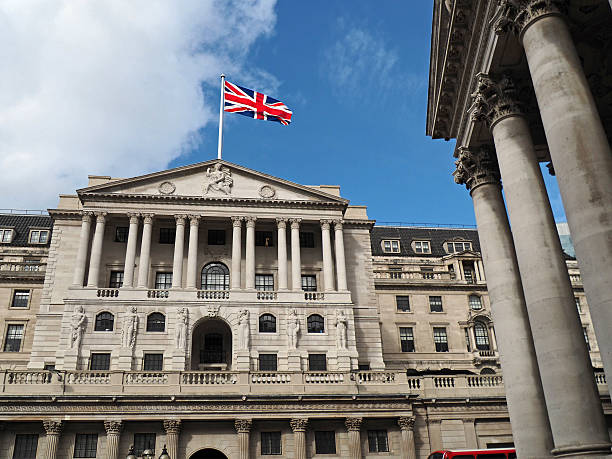Pinterest Stock Just Dropped 12% After Earnings. Is It a Red Flag, or a Buying Opportunity?

Key Points
Pinterest reported strong numbers for the second quarter, especially on the top line.
Monetization of non-U.S. users continues to be a strong point.
Tariff-related advertising concerns are weighing on investor confidence.
Pinterest (NYSE: PINS) reported its second-quarter earnings recently, and the stock fell by about 12% the next day. Although top-line revenue is growing faster than expected, the company's profitability was a little lower than analysts had hoped for, and there are some concerns about the effect of new tariffs on ad demand.
In other words, there was a lot of good to balance out the bad. So why is the stock falling so much? Is it a buying opportunity for long-term investors, or would it be best to stay away for the time being? Here's a quick rundown of Pinterest's Q2 results, why the stock is down, and whether it could be a good time to buy.
Where to invest $1,000 right now? Our analyst team just revealed what they believe are the 10 best stocks to buy right now. Learn More »

Image source: Getty Images.
Pinterest's second quarter: The good and the bad
We'll start with the good. Pinterest reported top-line revenue that grew by 17% year over year and handily surpassed analysts' expectations. Not only that, but the company gave upbeat third-quarter revenue guidance, and the platform added 8 million users for the quarter, nearly twice as many as were projected. There are now 578 million monthly active users worldwide, and there was growth in all three geographical segments Pinterest reports (U.S & Canada, Europe, and Rest of World).
The weakness, however, came on the bottom line. Pinterest missed earnings per share (EPS) estimates by two cents, which appears to be the main negative in the earnings report.
To be sure, other profitability metrics were quite strong. Free cash flow margin was almost 20%, compared with just 12% in the second quarter of 2024. Monetization of the user base is also progressing nicely, especially outside of the U.S., which is where the bulk of Pinterest users are.
Average revenue per user (ARPU) from the platform's 146 million European users grew by 26%. In the crucial Rest of World group, which includes 329 million users, Pinterest generated 44% more than it did a year ago. This remains a massive opportunity, as the average user in this group still generates less than 3% of the revenue that a typical U.S. user brings in.
Pinterest has $2.66 billion in cash and marketable securities on its balance sheet, nearly $150 million more than a year ago. The company's outstanding share count has fallen by almost 3% over the past year thanks to buybacks, and Pinterest has financial flexibility to take advantage of future opportunities that arise.
Concerns going forward
Despite the strong forecast going forward, Pinterest's management expressed concern over the effects of tariffs on ad spending. One example CFO Julia Donnelly cited in the company's earnings call is Asia-based e-commerce retailers hit by the end of the de minimis exemption to tariffs. So, while Pinterest stock took an initial plunge immediately after the earnings release, these comments are what triggered the double-digit decline.
Is it a buying opportunity?
In full disclosure, Pinterest is already one of my largest investments, so I'm not likely to add shares anytime soon. However, if you believe (as I do) that the tariff effects will be more of a short-lived problem than a permanent drag on ad demand, it could be a good time to take a closer look.
I've said many times that some of my favorite opportunities to buy shares of my favorite companies are when companies miss earnings by a penny or two and the stock proceeds to fall by double digits. While Pinterest could certainly be volatile, especially as the initial effect of tariffs plays out, the long-term thesis is still very much intact, and management is doing an excellent job.
Should you invest $1,000 in Pinterest right now?
Before you buy stock in Pinterest, consider this:
The Motley Fool Stock Advisor analyst team just identified what they believe are the 10 best stocks for investors to buy now… and Pinterest wasn’t one of them. The 10 stocks that made the cut could produce monster returns in the coming years.
Consider when Netflix made this list on December 17, 2004... if you invested $1,000 at the time of our recommendation, you’d have $653,427!* Or when Nvidia made this list on April 15, 2005... if you invested $1,000 at the time of our recommendation, you’d have $1,119,863!*
Now, it’s worth noting Stock Advisor’s total average return is 1,060% — a market-crushing outperformance compared to 182% for the S&P 500. Don’t miss out on the latest top 10 list, available when you join Stock Advisor.
*Stock Advisor returns as of August 4, 2025
Matt Frankel has positions in Pinterest. The Motley Fool has positions in and recommends Pinterest. The Motley Fool has a disclosure policy.





